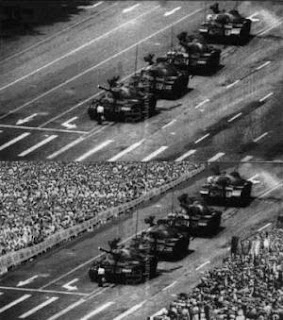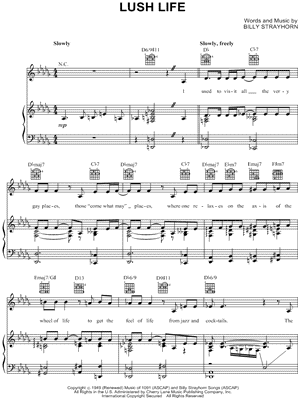 The Tiananmen Square Protest of 1989
The Tiananmen Square Protest of 1989 took place in Beijing and is an example of violence within a major city.

In the morning of May 4th, almost 100,000 students and workers protested in Beijing by demanding freedom of media and a better communication between the communist government and the student representatives. In  addition, the protest group urged the Party to accelerate political reform as it had promised previously.
addition, the protest group urged the Party to accelerate political reform as it had promised previously.
The government, however, rejected the proposal and only agreed to talk to a few student representatives, which also proved to be futile. The situation worsened when groups of students occupied the symbol of Beijing, the Tiananmen Square on May 13th, which was two days prior to the highly-publicized state visit by USSR's General Secretary Gorbachev. Hundreds of students went on hunger strikes, lasting more than a week.
Initially the Communist Leader Deng XiaoPing hoped to control the chaos through verbal warning to the students, but as the demonstration grew bigger and bigger as students from Shanghai, Xi'an, and Wuhan also joined the protest, Deng sent soldiers and tanks from the 27th and 38th Armies of the People's liberation Army to clear the area around Tiananmen Square. On June 4th, when the riot could not be contained by the soldiers anymore, tanks were ordered to crash the cars and even students protesting in the square. Although the Chinese government blocked the official death toll, the total fatality number was rumored to be around 7000 to 10000.
Both of my parents have experienced the riot themselves as they were both living in Beijing back then. From their point of view, I could conclude that the root of this disaster was the failure of communication within the city. My mom, an undergraduate student at the time, was actually a part of the demonstration. As she recalled, the student protest was a mess since the group lacked the true leadership that can provide the demonstrators a rea l chance to talk with the government officials. The leaders within the Party also failed to communicate with the students as it refused to let the young population give them advices about national policy. Furthermore, both the government and students had trouble in terms of their relationship with the military. The PLA, for example, was forcibly sent by the government to suppress the protesters. Initially when they were not allowed to open fire, students harassed the soldiers by spitting, cussing, and in some cases even physically abusing them. So when the government on June 4th ordered the army to hit back, huge number of deaths was inevitable since hatred between the military and the civilians was already severely elevated beforehand. This example had shown that malfunctioning communication within an urban city could seriously threat the city's security as the violence in Beijing could have been completely avoided if the military, the government, and the students had a better understanding of each other.
l chance to talk with the government officials. The leaders within the Party also failed to communicate with the students as it refused to let the young population give them advices about national policy. Furthermore, both the government and students had trouble in terms of their relationship with the military. The PLA, for example, was forcibly sent by the government to suppress the protesters. Initially when they were not allowed to open fire, students harassed the soldiers by spitting, cussing, and in some cases even physically abusing them. So when the government on June 4th ordered the army to hit back, huge number of deaths was inevitable since hatred between the military and the civilians was already severely elevated beforehand. This example had shown that malfunctioning communication within an urban city could seriously threat the city's security as the violence in Beijing could have been completely avoided if the military, the government, and the students had a better understanding of each other.
Source: Wikipedia















 at the rest of the lyrics from each song, the city is described as a cold, a deceitful, and a hard place to live. From the Guns and Roses point of the alternative aspect of the city is expressed in the lyrics, “Just a' urchin livin' under the street I'm a hard case that's tough to beat.” He compares himself to an urchin which is a bottom feeder on the sea floor. In another verse the lyrics state, ”Captain America's been torn apart Now he's a court jester with a broken heart.” Here Guns and Roses is talking about America as the mighty nation it is as corrupt and torn down. Tracy Chapman gives her perception on how the city will be at first, ”I know things will get better you'll find work and I'll get promoted we'll move out of the shelter buy a bigger house and live in the suburbs.“ She knows she will have to work from nothing and build her way up. Later her lyrics express another understanding of the city, ”You got a fast car and I got a job that pays all our bills, you stay out drinking late at the bar see more of your friends than you do of your kids.“ These lyrics express how city life can change and corrupt people and their values.
at the rest of the lyrics from each song, the city is described as a cold, a deceitful, and a hard place to live. From the Guns and Roses point of the alternative aspect of the city is expressed in the lyrics, “Just a' urchin livin' under the street I'm a hard case that's tough to beat.” He compares himself to an urchin which is a bottom feeder on the sea floor. In another verse the lyrics state, ”Captain America's been torn apart Now he's a court jester with a broken heart.” Here Guns and Roses is talking about America as the mighty nation it is as corrupt and torn down. Tracy Chapman gives her perception on how the city will be at first, ”I know things will get better you'll find work and I'll get promoted we'll move out of the shelter buy a bigger house and live in the suburbs.“ She knows she will have to work from nothing and build her way up. Later her lyrics express another understanding of the city, ”You got a fast car and I got a job that pays all our bills, you stay out drinking late at the bar see more of your friends than you do of your kids.“ These lyrics express how city life can change and corrupt people and their values.






 Second, the city of Kingston was much poorer and more rundown than you might see in the beach side resorts. Even the nicer areas of town would lack what any of us would consider to be basic features such as clothes dryers. The prep school where a former St. Stephen’s boarding student went looks no nicer than the oldest and most neglected schools in our city, quite a contrast to St. Stephen’s. Without the school’s name on the side, one might easily mistake it for a prison.
Second, the city of Kingston was much poorer and more rundown than you might see in the beach side resorts. Even the nicer areas of town would lack what any of us would consider to be basic features such as clothes dryers. The prep school where a former St. Stephen’s boarding student went looks no nicer than the oldest and most neglected schools in our city, quite a contrast to St. Stephen’s. Without the school’s name on the side, one might easily mistake it for a prison.



